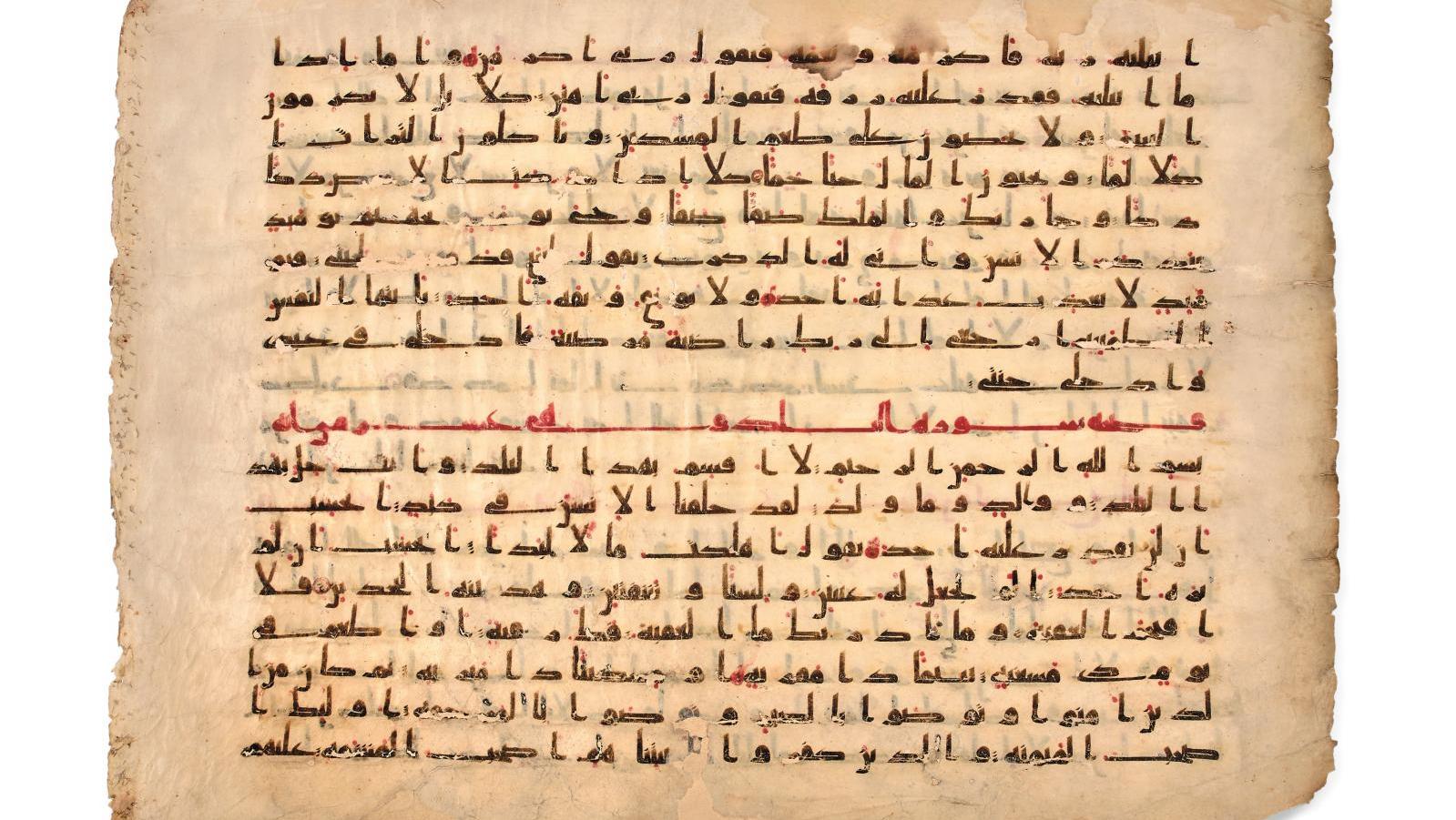Enriched with gold illuminations and intricate calligraphy, Islam’s holiest texts were available in sumptuous forms. However, it was a more sober version that attracted the most attention at a recent auction.

Mesopotamia, late Umayyad period, c. 750, monumental Quran leaf on parchment, sepia ink on parchment, 42.5 x 58.5 cm/16.73 x 23.03 in.
Result: €837,545